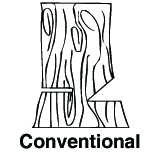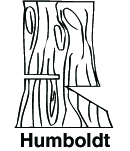Kenster said:uncontrolabLEE said:A 90 degree notch will not close up and break your hinge off till the tree hits the ground = full side to side control of the tree.
A 45 degree cut wouldn't close until the tree is parallel with the ground. Wouldn't that be just as good? I'm asking because I don't know. Just trying to learn.
And isn't there something call a Humbolt cut, or something like that? A 45 degree cut with the angle cut below the horizontal cut? How does that work?
Std recommendation I've seen lately is 70 deg face cut to 1/3 the diameter. So the hinge tears off just before the stem lands.
90 deg would be HUGE. Impossible except both sides are angled.




